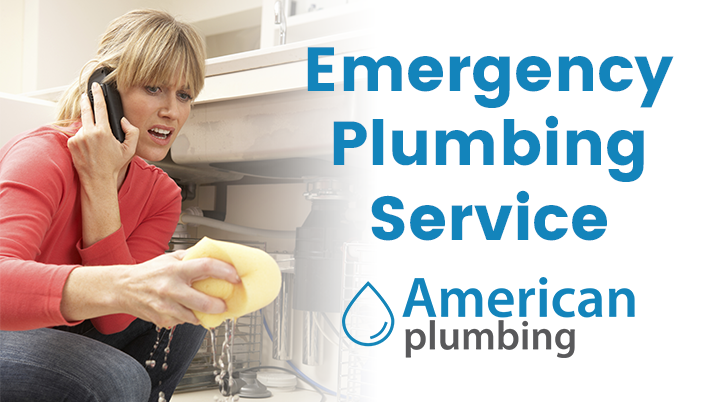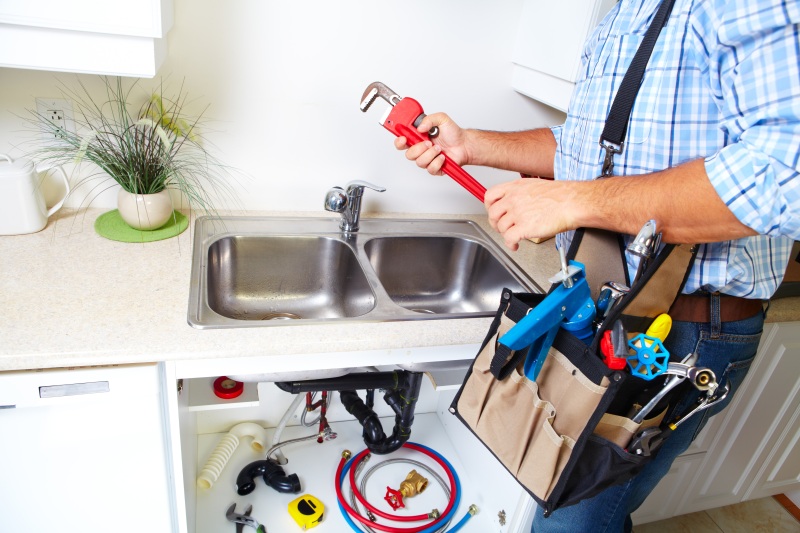The Advantages and disadvantages of Different Water Home Heating Equipments
How to Fix a Dripping Pipe and a Dripping Radiator ==================================================
Dealing with a pesky leakage, eh? Whether it's in your pipelines or radiator, those undesirable drips can promptly come to be a problem. Yet do not fret with the appropriate method, you can obtain that leak restored and prevent future headaches. Initially, you'll need to identify the resource and prepare your work space. After that, it's time to take on the trouble head-on. However prior to you plunge in, there's an essential step you can't afford to miss out on. Let's check out the proper way to take care of those leaks and keep your home completely dry and comfy.
Trick Takeaways

- Diagnose the source of the leak by examining the damaged area, examining joints and connections, and listening for trickling audios.
- Shut down the supply of water and clear the work area to get ready for the repair process.
- Tighten up loose pipeline joints or replace the damaged section to fix a leaking pipe.
- Address a leaking radiator by tightening the packaging nut on the leaking valve or changing the shutoff if essential.
- Frequently examine and preserve the radiator and pipeline system to stop future leaks.
Recognizing the Source of the Leakage
To repair a leaking pipeline or radiator, you need to first determine the resource of the leakage. Carefully inspect the afflicted location, searching for any kind of noticeable indications of wetness or water damage. Inspect the joints, connections, and seals for fractures, openings, or loosened installations that might be triggering the leakage.
One of the most effective ways to locate the source of the leakage is to search for water stains on the walls, floors, or ceiling. These water stains can provide clues regarding where the leak is originating. Additionally, you can attempt tapping along the pipelines or radiator to listen for any kind of leaking noises that may indicate the source of the leakage.
When you have actually pinpointed the area of the leakage, you can start the procedure of repairing it. This may include tightening installations, replacing washing machines, and even changing the entire pipeline or radiator element. By precisely diagnosing the leak, you'll be much better outfitted to find a lasting option.
Preparing the Office
Initially, make certain you have actually shut off the water supply to the impacted pipeline or radiator. This will avoid further water leak and make the repair procedure more secure.
Next off, clear the prompt location around the leakage, getting rid of any kind of furnishings, flooring, or various other materials that could block your accessibility.
With a clear workspace, you can currently organize your tools and materials. Collect the essential products like wrenches, pliers, a container, dustcloths, and any type of specific components needed for the repair. Prepare these products within very easy reach so you can work efficiently.
Remember to double-check that you have everything you need before starting the solution.
Correct office organization and device choice are key to an effective pipeline or radiator repair. By preparing the area and having your tools at the ready, you'll have the ability to tackle the work quickly and securely.
Make the effort to set up your work area, and you'll be one action better to solving that pesky leakage.
Shutting down the Water
Prior to attempting any repair work, you'll require to shut down the water supply to the affected pipe or radiator. This guarantees no added water gets away throughout the repair, making the procedure safer and extra effective.
Find the nearest shut-off valve, which may be near the fixture or along the primary water line, and turn it clockwise to stop the flow.
There are a few common sorts of shutoffs you might encounter. Gate valves are one of the most usual, with a wheel-shaped handle that turns to open up or close the shutoff. Round shutoffs have a spherical plug that turns to control the water flow. Angle stops are frequently utilized for individual fixtures, with a straight or tilted body and a deal with that turns the water on and off.
Once the water is shut down, open any kind of faucets or components downstream to eliminate stress and drain pipes the line. This will make the repair work much easier. Double-check that the supply is totally closed prior to proceeding with the solution.
Fixing a Leaking Pipe
As soon as you have actually turned off the water, you can get to work with fixing the leaking pipeline. Meticulously inspect the area around the leak to identify the cause, whether it's a fracture, opening, or loose joint. Relying on the issue, you may require to replace an area of the pipe or merely tighten a connection.
For leak discovery, look for indications of wetness, water stains, or puddles. Once you have actually found the resource, you can start the pipeline repair service process. https://elthamplumber.co.uk If the pipe is broken or has a hole, you'll require to remove the harmed section and replace it with a new item. Utilize a pipeline cutter or hacksaw to clean, straight cuts, and ensure the new section fits well.
If the issue is a loosened joint, try tightening up the link with a wrench. You might likewise require to utilize plumbing professional's putty or tape to secure it. Make sure to look for any kind of various other possible leakages prior to transforming the water back on and checking the fixing.
Attending To a Leaking Radiator
If your home's radiator is leaking, you'll require to attend to the concern immediately to prevent water damage and guarantee effective home heating.
Take a look at the radiator very closely to identify the resource of the leak, whether it's a crack, a loosened connection, or a problem with the shutoffs.
To identify the leak, very carefully examine the whole radiator, consisting of the shutoffs, pipelines, and any visible seams or installations.
As soon as you have actually situated the resource, shut off the heater and enable the radiator to cool totally prior to attempting any type of repair work.
For a leaking valve, you may have the ability to tighten the packing nut or replace the shutoff entirely.
If the leakage is originating from a split or joint, you'll likely need to spot the radiator or, in many cases, change it totally.
Keep in mind to adhere to proper radiator maintenance methods, such as routinely bleeding the system and flushing the radiator, to prevent future leaks.
Preventing Future Leaks
To avoid future leaks in your home's radiator system, consistently examine the parts and attend to any problems without delay.
Preserving the system by hemorrhaging the radiators and flushing the pipes can also help lessen the threat of leaks down the line. Regular maintenance is essential to leak prevention.
Examine the radiators and pipelines for indicators of wear, rust, or damage, and resolve any kind of troubles right away. Bleed the radiators each year to release trapped air, which can cause stress accumulation and leakages. Flushing the pipelines every few years will get rid of any type of sludge or particles that could result in blockages and leaks.
Additionally, be mindful of the age of your radiator system. Older systems are much more vulnerable to leakages as the parts use down with time.
Take into consideration updating to a more modern-day, energy-efficient system if your own is nearing the end of its lifespan. By remaining aggressive with maintenance and prompt repair work, you can secure your home from the hassle and damage brought on by radiator and pipe leakages.
Regularly Asked Inquiries
What Tools Are Needed for Pipe and Radiator Repair?
To repair a leaky pipe or radiator, you'll require a couple of essential devices.
Beginning with monkey wrench to tighten up installations and a container to capture water.
You'll likewise need pipe insulation, an energy blade, and radiator fittings like gaskets or washers.
Do not forget a pail, cloths, and towels to clean up any type of spills.
With the right devices on hand, you can take on those annoying leakages and obtain your plumbing back in great shape.
Exactly how Do I Securely Deal With Old Pipeline and Radiator Products?
When disposing of old pipe and radiator products, it is essential to do so securely.
Begin by dividing any steel components, as they can typically be reused.
Nevertheless, be cautious with any continuing to be fluids or insulation, as they may be considered hazardous waste.
Consult your local authorities on the appropriate disposal methods in your location.
Can I Do These Repair work if I Have No Prior Experience?
You can certainly carry out these repair services also if you have no previous experience.
With the appropriate DIY confidence and accessibility to practical knowing resources, you can deal with these tasks efficiently.
Do not be afraid to jump in and get your hands dirty there are lots of on-line tutorials and overviews that'll walk you with the procedure step-by-step.
Just take it reduce, follow the guidelines very carefully, and you'll be taking care of those leakages quickly!
What Are the Usual Root Causes Of Pipeline and Radiator Leaks?
Pipe and radiator leaks can stem from different reasons, such as deterioration, damages, or even inappropriate setup.
To identify the problem, you'll require to perform a leak detection examination, which might include using sealer kinds like epoxy or silicone.

As soon as you've determined the resource of the leak, you can take steps to repair it, like replacing a damaged section or applying the proper sealant.
Don't stress if you've never ever done this before – with the right devices and a little research, you can take on these repairs.
Exactly how Do I Know if I Need to Change the Entire Pipeline or Radiator?
To identify if you require to replace the whole pipeline or radiator, you'll want to check the pipe closely for cracks, holes, or considerable rust.
Inspect the radiator's efficiency by monitoring its warmth result.
If the pipeline has major damages or the radiator isn't heating correctly, you'll likely require to replace the complete component.
But minor concerns might be reparable with sealers or straightforward fixings.
Review the level of the problem before making a decision if substitute is necessary.
Verdict
To avoid future leaks, on a regular basis examine your pipes and radiator.
Turn off the water supply prior to making fixings, and ensure the location is totally dry before restoring circulation.
With the right tools and strategies, you can promptly repair a leaking pipe or radiator and prevent water damage.
Take your time, job safely, and don't be reluctant to call a specialist if needed.